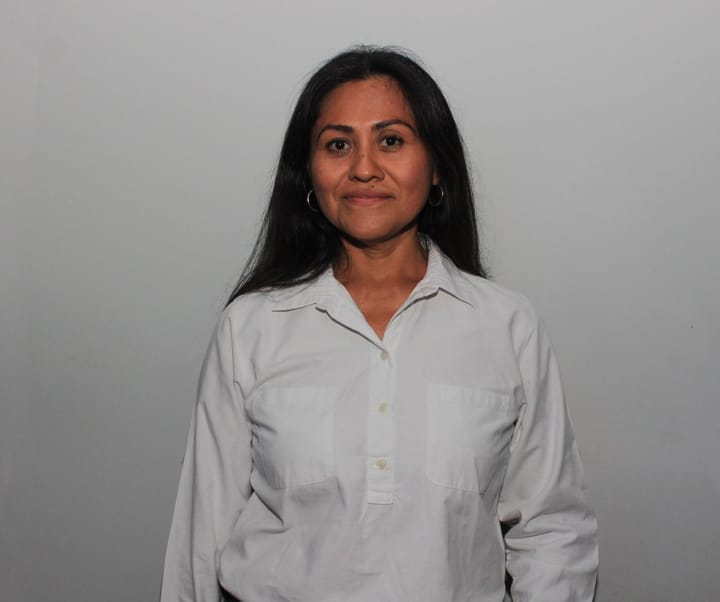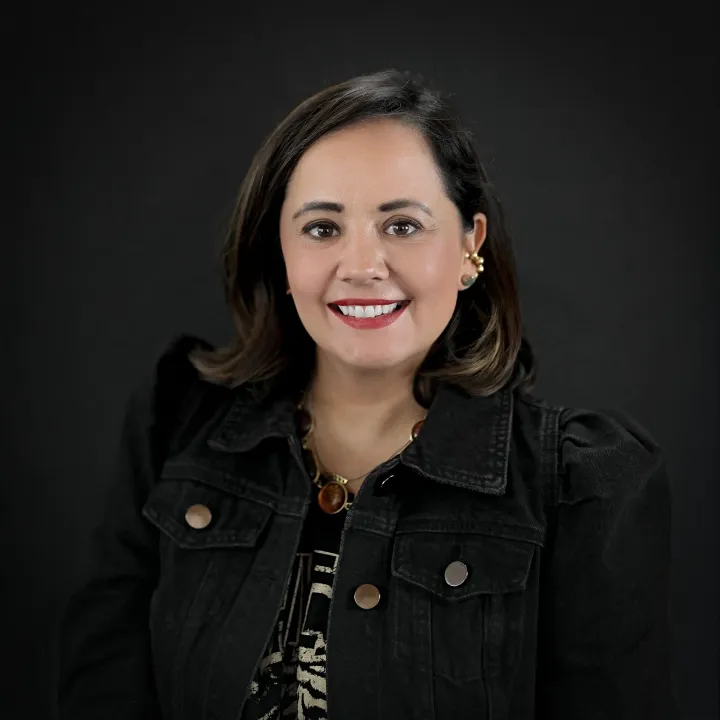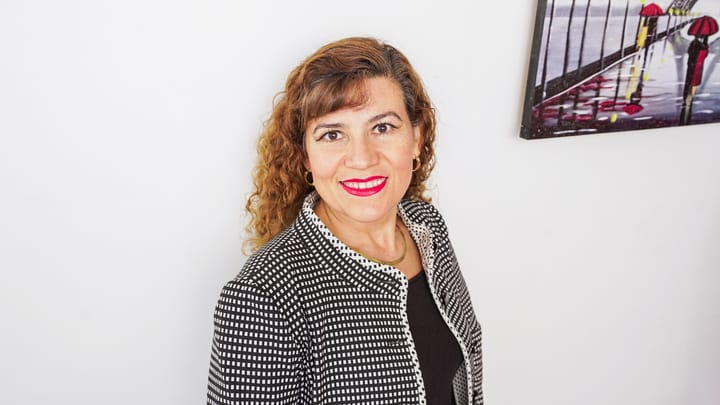Por Karla Galarce Sosa

Acapulco, Guerrero
En la víspera de la devastación que provocó el huracán Otis, releer las crónicas que otros colegas han compartido me despierta de nuevo una sensación de alerta.
Al revisar las fotos y videos que hice el año pasado que sirvieron para las notas que redacté, llegan también sentimientos encontrados, no sólo por lo que iba encontrando en mi camino, sino por lo que hoy tengo frente a mí.
Hace un año atestigüé la forma en que miles abandonaban aterrorizados la ciudad en la que vivo, cuando los equipos de emergencia y búsqueda, así como decenas de camiones con policías de la Guardia Nacional llegaron el jueves 24 de octubre de 2023 cuando se ponía el sol, casi 24 horas después del suceso. Ante todo ello, la rapiña que no se detenía.
Recuerdo cómo inició mi búsqueda de otros datos a la risible cifra de personas fallecidas que el gobierno federal ofreció en las primeras dos semanas; de la inverosímil cifra decenas de personas desaparecidas y ante la falta de datos por los cuantiosos daños en la ciudad.
Un año ya desde esa experiencia, de reconocer el amor y la generosidad de quienes fueron compañeros de tragedia y hoy son amigos. Nuevas amistades con quienes podemos vernos a los ojos y presumirnos sonrientes “estamos vivos”.
No obstante estamos a un par de días del primer mes de una nueva tragedia que nos nubló la vida a quienes vivimos en Acapulco, considerado un paraíso y la joya mexicana del turismo internacional.
Acapulco quedó de nuevo cubierto de agua y lodo, pero esta vez, hubo deslaves que dejaron intransitables calles de colonias populares y que siguen limpiando.
El huracán Otis nos arrancó techos, ventanas, hizo explotar los cristales de los automóviles y de las casas, desnudó los edificios más endebles e inundó parte de la zona Diamante. No hubo una sola vivienda en la ciudad en la que no se hubiera registrado algún daño.
Las personas, todas, compartían penosas historias de miedo y desesperanza. Otis exhibió la marcada desigualdad, las décadas de abandono en servicios públicos, pues todo era enfocado a la zona turística.
Entonces ese poderoso huracán categoría cinco, cobró la vida de 52 personas. Las zonas populares no sólo quedaron sin árboles, sino que las precarias casas fueron completamente arrancadas y en algunas colonias hoy en día no hay viviendas, porque las familias no han logrado pagar a un albañil que les construya una barda, o cuele un techo que les permita resguardarse ante la llegada de otro meteoro.
Los apoyos en efectivo que el gobierno de Andrés Manuel López Obrador entregó a los damnificados que fueron censados, encarecieron la mano de obra y los materiales haciéndolos inalcanzables para muchos de nosotros.
Vivimos durante más de seis meses un infierno por la falta de árboles, por las interminables filas para conseguir agua bajo el rayo del sol, para comprar gasolina o víveres.
Los meses subsecuentes, contrario a las versiones del gobierno federal, fueron como si el tiempo se hubiera detenido, pues pasamos días sin señal de celular, con frecuentes cortes de luz eléctrica y en el incesante esfuerzo de reanudar una nueva cotidianidad ante lo que todo lo que conocíamos se había caído.
En cambio el huracán John, acentuó las afectaciones que Otis dejó, pues la cantidad de agua que cayó en cinco días en Acapulco provocó peligrosos deslaves y fuertes corrientes de agua que destruyeron caminos, calles y carreteras, sepultaron viviendas de concreto y provocaron la muerte de 15 personas.
Esta segunda devastación, un nuevo y catastrófico huracán afectó a todas las regiones de Guerrero y dejó bajo el agua a la zona Diamante hasta alcanzar en algunas partes como Puerto Marqués, tres metros de altura.
Mucho se habla de que el corazón de la economía de Guerrero quedó destruído, provocando con ello que las familias afectadas de hace un año y ahora, encontraran en los bloqueos la única manera de ser escuchadas para recibir apoyos económicos.
Todos los días hay un bloqueo que trastoca la ciudad ya sea por los censos del gobierno federal o por la falta de agua, pues el sistema de abastecimiento quedó completamente destruido en esta ocasión, lo que no sucedió el año pasado.
Al concluir la administración federal de López Obrador, la titular de Bienestar federal, Ariadna Montiel, quien fue ratificada por la presidenta Claudia Sheinbaun Pardo vino a Acapulco con la actual dirigente nacional de Morena y entonces secretaria de Gobernación, Luis María Alcalde Luján, para cerrar con pinturas multicolor las fachadas de las casas en el anfiteatro.
A mucha gente le pareció el mejor final de la administración. Considero que la pintura no resolverá la imperiosa necesidad de una vivienda segura, no suplirá un plan familiar y de auto cuidado ante desastres naturales, ni tampoco cambiará nuestra actual educación que trastoca los ecosistemas.
¿Por qué gastar en pintura y no comenzar en desazolve de cuerpos de agua? ¿Por qué repartir dinero y enseres a la gente de nueva cuenta y no diseñar mecanismos para evitar una nueva inundación? ¿Por qué legitimar las invasiones de sitios que en otras administraciones fueron declaradas como zonas inhabitables, como es el caso de Campestre de la Laguna, en donde las gobernantes municipal y estatal han llegado para decir “no están solos”? ¿Por qué mantener los negocios sobre la zona federal, sobre la franja de arena, siendo históricamente irregulares?
Se había advertido que ante la inminente manifestación del cambio climático habría fenómenos hidrometeorológicos más fuertes que modificarían la línea de costa, pero nadie hizo caso.
Se había advertido que Acapulco sería una de las ciudades que quedarían bajo el agua.
Se había advertido que la naturaleza recuperaría sus espacios y seguimos sin hacer caso.
¿Debemos contar las lamentables muertes y las pérdidas económicas para medir la fuerza de la naturaleza?
Hemos aprendido a ser resilientes a pesar de todo pero, ¿dónde queda la salud mental? Hasta mis perros se alteran con cada lluvia, con cada ventisca, con cada trueno o relámpago.
¿Somos realmente capaces de soportar otro huracán bajo estas condiciones? ¿Cómo establecemos una tregua con la naturaleza y podemos coexistir?
Tengo más dudas que respuestas porque hasta este día no he definido si mantengo o cambio de código postal. La temporada de lluvias no ha terminado, pero mis vecinos solo comentan “ahí viene otro”.
Seguimos limpiando nuestras casas y recuperando lo que John nos dejó, lamiéndonos las heridas que Otis mantiene abiertas, pero con la certeza de que estamos vivos, aún tristes y contrariados, vivos y completos, sin funerales cerca.
Lo que sí reconozco es la incapacidad disfrazada de desinterés de las autoridades por promover una cultura en materia de protección civil, un cambio de hábitos consumistas o modificar hábitos enfocados a una verdadera educación del cuidado ambiental.
Tenemos mucho por cambiar, pero el cambio no será a partir de las autoridades porque han demostrado su incapacidad.
Nos falta fortaleza como sociedad, nos falta organización y por supuesto, contar con lo básico para dar el salto. Pero eso no lo lograremos solos, sino de la compañía de Estados que han sorteado tragedias como las que estamos atravesando.
El huracán Otis me recordó que seguimos teniendo gobernantes interesadas en su imagen y con la mira puesta en la próxima elección.
El huracán John me ha obligado a aprender a recibir y a agradecer, porque a diferencia de Otis que salí por ayuda, en esta ocasión, me quedé en casa y recibí a quienes con mucho amor, llegaron para ayudarme.
La sensación de que el tiempo se detuvo con Otis, lo tengo acá de nuevo. La gente sigue viviendo y nosotros por este lado, seguimos limpiando.
*Periodista que radica en el puerto de Acapulco, Guerrero. Egresada en Ecología Marina por la Universidad Autónoma de Guerrero, ha dedicado su carrera a temas de género, derechos humanos y medio ambiente. Desde hace cuatro años, trabaja en la agencia de noticias Quadratín, donde ha profundizado en estas especialidades. Anteriormente, colaboró durante más de una década en el periódico El Sur, un referente guerrerense. Además, su trabajo ha sido publicado en el portal Con Perspectiva, dirigido por mujeres periodistas y promotoras culturales, así como en la Revista Costa Brava y en El Faro de la Costa Chica y Sur Acapulco.
Las opiniones expresadas son responsabilidad de sus autoras y son absolutamente independientes a la postura y línea editorial de Opinión 51.






Comments ()